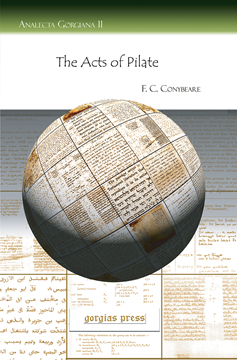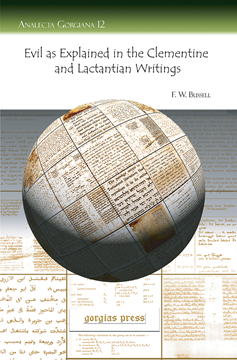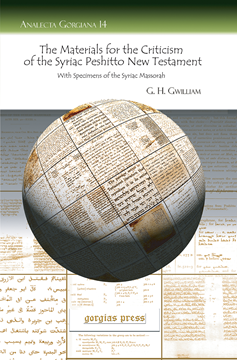The Galatia of Saint Paul and the Galatic Territory of the Book of Acts
By W. M. Ramsay
Series: Analecta Gorgiana 10
ISBN: 1-59333-488-5
Ramsay makes a strong case for the southern location of the Galatia mentioned in the New Testament. Using several streams of evidence, Ramsay makes a forceful case for the South-Galatian theory.
$42.00 (USD) $25.20 (USD)
The Acts of Pilate
Series: Analecta Gorgiana 11
ISBN: 1-59333-489-3
The Acts of Pilate is an apocryphal document of uncertain date. Conybeare offers an introduction to and a critical edition of this text based on a Greek recension compared with two Armenian versions.
$49.00 (USD) $29.40 (USD)
Evil as Explained in the Clementine and Lactantian Writings
Series: Analecta Gorgiana 12
ISBN: 1-59333-490-7
This essay grapples with the question of theodicy as represented by the Ante-Nicene writers Lactantius and the writer of the Pseudo-Clementine literature. Bussell’s dialogue with these sources points to the role human responsibility plays in the origin of evil.
$45.00 (USD) $27.00 (USD)
Style and Language in the Writings of Saint Cyprian
By E. W. Watson
Series: Analecta Gorgiana 13
ISBN: 1-59333-491-5
A thorough analysis of St. Cyprian’s writing style and use of language, this study is invaluable for the student of the saint. Comparison with contemporary writers and careful attention to grammatical and linguistic elements mark this useful study of an important figure of early Christianity.
$63.00 (USD) $37.80 (USD)
The Materials for the Criticism of the Syriac Peshitto New Testament With Specimens of the Syriac Ma
Series: Analecta Gorgiana 14
ISBN: 1-59333-492-3
Gwilliam organizes the sources available for a critical edition of the Peshitto New Testament. These sources include the major manuscripts, Syriac Massorah, and the Arabic and Persian versions. He addresses revisions of the Peshitto New Testament and how the materials cited might be used for a critical edition of the Peshitto.
$46.00 (USD) $27.60 (USD)
The Text of the Canons of Ancyra
The Greek, Latin, Syriac and Armenian Versions
Series: Analecta Gorgiana 15
ISBN: 1-59333-493-1
Rackham publishes here a critical edition of the Canons of the Council of Ancyra (314). In his comments on the text he evaluates the manuscripts available for this edition and provides the Syriac and Armenian versions for comparative purposes.
$50.00 (USD) $30.00 (USD)





